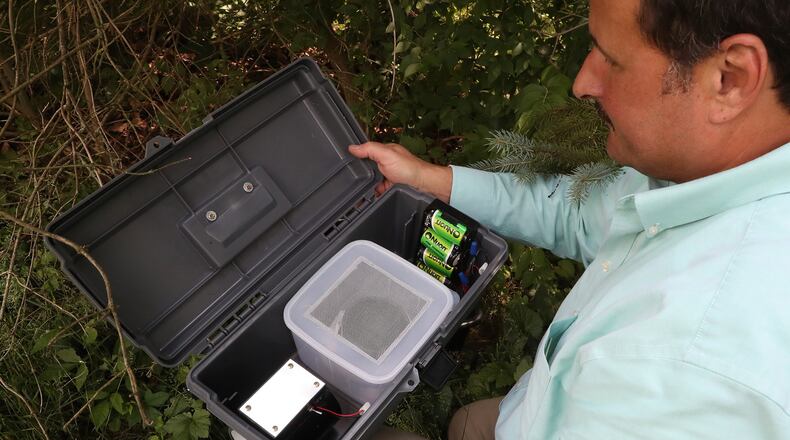Mosquito samples collected in two locations in Miami County have tested positive for the virus and the virus was also detected in a sample in Greene County, officials from the two counties said.
MORE: West Nile detected in Greene County mosquitoes
“West Nile virus activity in mosquitoes is the highest Ohio has seen this early in the season since 2012 when we reported 122 human cases for the year,” said Sietske de Fijter, state epidemiologist with Ohio Department of Health, following the first human case of the season reported late July in northeastern Ohio.
The virus, spread through mosquito bites, spreads in Ohio each year. People are most at risk of getting the virus summer through early fall, with most symptoms reported late July through early October.
De Fijter said the department is encouraging Ohioans to take precautions to avoid mosquito bites, including by eliminating potential breeding sites around their homes.
RELATED: West Nile Virus detected in Miami County mosquitoes
There have been two cases of West Nile virus detected in humans in the state. Those cases were in Lake and Ross counties. There have also been 1,078 mosquitoes found positive for the virus this season, as of Aug. 6, when the latest state data was updated.
In 2017, there were 34 cases detected in humans and five deaths in the state.
Most people infected with the virus do not develop any symptoms. Up to 20 percent will have symptoms that can last a few days or as long as several weeks. About one in 150 infected with the virus will develop severe illness.
Symptoms of the virus include, headache, body aches, joint pain, vomiting, diarrhea, or rash, according to health officials. Some severe illness symptoms can include high fever, vision loss, numbness, disorientation or muscle weakness.
RELATED: Ohio reports first West Nile virus case of 2018
Miami County Public Health commissioner Dennis Propes said since there were no positive mosquito tests in the county last year “the West Nile is definitely more significant than it was last year.”
He added that the state overall is experiencing and uptick. He said the positive mosquitoes were tested from mosquito pools near several parks in the county, but that is because the parks are where officials have easy public access to test. The tests don’t indicate a concentration near the parks and people should take precautions against bites in any area.
“The West Nile virus in endemic in Ohio. It’s not going any where. We will always test for it,” he said.
In Clark County in response to the West Nile virus, the health department is working with property owners to reduce breeding sources by draining stagnant water or using products that are safe for pets and humans but treat stagnant water so its not a breeding source.
The health department will also be misting affected areas and distributing flyers in the affected area.
‘Dramatic increase’ means more risk
Dan Suffoletto, spokesman for Public Health - Dayton & Montgomery County, said the department “has been observing an increase in the number of mosquitoes being trapped that are testing positive for the West Nile Virus.”
“This dramatic increase in levels means that there is a greater chance of someone being bitten by a mosquito that is carrying the disease,” he said.
The department advises that when outdoors, people should take precautions against being bitten by a mosquitoes including using EPA approved mosquito repellent containing DEET, wearing light colored clothes with long sleeves, and removing standing water from your yard.
Tips to avoid mosquito bites
• Use EPA registered repellents according to label instructions.
• Wear long sleeves, long pants and long socks when outdoors.
• Mosquitoes may bite through thin clothing, so spraying clothes with an EPA registered repellent will give extra protection.
• Treat clothing and gear such as pants, boots, socks and tents with a product containing permethrin, or buy permethrin treated clothing or gear. Do not apply permethrin directly to skin.
• Have screens on windows and doors to keep mosquitoes outside.
• Empty standing water on a regular basis from flowerpots, gutters, buckets, pool covers, pet water dishes, discarded tires and birdbaths.
About the Author
